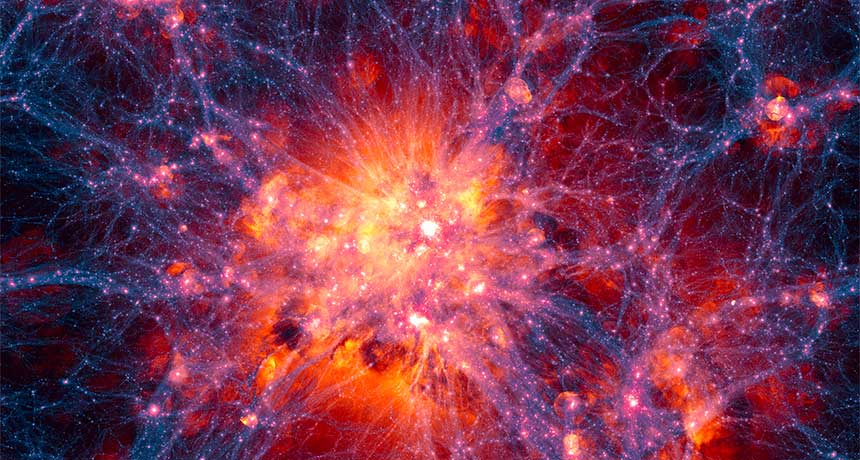How to make the cosmic web give up the matter it’s hiding
Half the universe's ordinary matter is missing. This new technique might have found it.

A TANGLED SKEIN This computer simulation of the universe highlights its structure: long filaments of dark matter (blue) with galaxies strung along them like beads (pink). Most of the regular matter is probably stored in gas (orange).
Illustris Collaboration